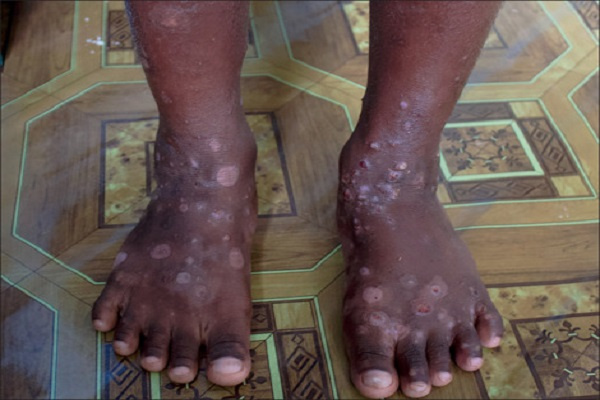 |
WINDHOEK, April 7 (NNN-AGENCIES) — The Namibian Ministry of Health and Social Services has cautioned the public after receiving reports of the increasing number of human scabies cases, mainly in the Kunene region.
Health minister Kalumbi Shangula said the most affected populations are communities living along the northern borders, pupils in the affected regions and migrant populations in urban and peri-urban areas where access to water and sanitation facilities is lacking or inadequate.
“The assessment revealed that 3,454 cases of scabies were reported countrywide during the period between January and March.
“The distribution of cases includes Kunene (1,418 cases), Ohangwena (708), Otjozondjupa (402), Kavango West (375), Kavango East (204), Omusati (130), Oshana (104), Omaheke (46), Hardap (20), Oshikoto (20), Erongo (17) and Kharas (10),” he told a media conference.
“Human scabies is a parasitic infestation caused by Sarcoptes scabiei var hominis. The microscopic mite burrows into the skin and lays eggs, eventually triggering a host immune response that leads to intense itching and a rash,” he said.
Scabies infestation may be complicated by bacterial infections, leading to the development of skin sores that in turn may lead to the development of more serious consequences such as septicaemia, heart disease and chronic kidney disease.
According to the World Health Organisation, scabies is one of the most common dermatological conditions in developing countries.
“The state health facilities have been reporting cases of scabies in the past, particularly in the northern regions. However, as of October 2021, a number of scabies cases have been reported throughout the country.”
“According to the reports, the current transmission of scabies has moved from households to schools with challenges of water supply and where personal hygiene practices have been found to be less than adequate,” Shangula added.
“Scabies is usually transmitted from person to person through close skin contact, for example living in the same residence with an infected individual.
“The risk of transmission increases with the level of infestations, with the highest risk due to contact with individuals with crusted scabies,” he added. — NNN-AGENCIES






